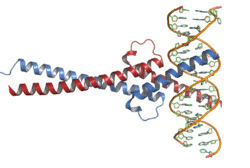The study, led by the Vall d’Hebron Institute of Oncology (VHIO), has managed to eliminate mouse lung tumours by inhibiting Myc, a protein which acts as a regulator gene that codes for a transcription factor. That’s just a fancy way of saying that if Myc mutates, cancer will probably occur. Furthermore, their results showed that even long term repeated treatment doesn’t cause any negative effects.

“The most important finding was that there were no signs of resistance to treatment. This is one of the biggest disadvantages of many anticancer therapies: the disease develops resistance and can return even more aggressively.”, explained Dr Laura Soucek.
These encouraging results provide sufficient scientific evidence to consider taking the next step: inhibiting Myc in patients.
“Now our challenge for the future is to make Myc inhibition feasible from a pharmacological point of view, so that it can be administered, and done so safely. This will be the last step before designing clinical trials with Myc inhibitors,” explained Dr Soucek. “We’re so excited about reaching this turning point and I am quite certain that it will change the course of cancer therapy, despite there being a long road ahead.”
So what’s up with this, what’s the problem with this approach? Well, this is gene therapy, and the main issue with gene therapy is delivery of the therapeutic gene to a specific target. Don’t get me wrong, this study shows some absolutely fantastic results which show great promise, but how exactly are you going to deliver the therapeutic gene to a person with cancer? Sure, it’s easy with mice, you just genetically engineer them, but it’s an entirely different story with humans.
Abstract here.
Via VHIO


